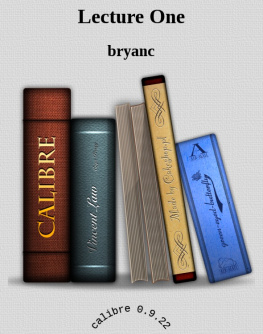


Reportage:
the factual, journalistic presentation of an account in a book or other text.
FRONT COVER: The last word in reportage: Pheidippides giving word of victory after the Battle of Marathon. On delivering the good news, he dropped down dead from exhaustion. By Luc-Olivier Merson (1869).
Fonthill Media Language Policy
Fonthill Media publishes in the international English language market. One language edition is published worldwide. As there are minor differences in spelling and presentation, especially with regard to American English and British English, a policy is necessary to define which form of English to use. The Fonthill Policy is to use the form of English native to the author. Paul Chrystal was born and educated in Scotland and England; therefore, British English has been adopted in this publication.
Fonthill Media Limited
Fonthill Media LLC
www.fonthillmedia.com
First published in the United Kingdom and the United States of America 2019
British Library Cataloguing in Publication Data:
A catalogue record for this book is available from the British Library
Copyright Paul Chrystal 2019
ISBN 978-1-78155-718-1
The right of Paul Chrystal to be identified as the author of this work has been asserted by him in accordance with the Copyright, Designs and Patents Act 1988.
All rights reserved. No part of this publication may be reproduced, stored in a retrieval system or transmitted in any form or by any means, electronic, mechanical, photocopying, recording or otherwise, without prior permission in writing from Fonthill Media Limited
Typeset in 10pt on 13pt MinionPro
Printed and bound in England
Plates Section

One of the four oldest known samples of the use of the Greek alphabet. It has been dated to c. 740 BCE: (h)o o (): written by Durutomo.

Late Cycladic (seventeenth-century BCE) gold ibex sculpture about 10 cm long with lost wax-cast feet and head, Repouss body, from an excavation on Santorini. This is the only gold object so far found from the excavation; it was hidden underneath a floor. That fact, and the lack of skeletal remains associated with the volcanic event that destroyed the Thera island group in the seventeenth century BCE, suggests an orderly evacuation was performed before the volcanos collapse into the current caldera, now some 3,000 feet deep. (Leonard G.)

The Fall of the Titans (15881590) by Cornelis van Haarlem (15621638) from the Statens Museum for Kunst (Den Kongelige Malerisamling) Copenhagen, Denmark.

Circe and her Swine (1892).

Medea by Frederick Sandys (18291904).

Nekyia: Persephone supervising Sisyphus pushing his rock in the Underworldone of the disturbing scenes Aeneas would have witnessed in the underworld. Side A of an Attic black-figure amphora, c. 530 BCE, from Vulci, Swing Painter.

Dido and Aeneas, a Roman fresco in the National Archaeological Museum of Naples (inv. 112282); fresco from the House of Citharist in Pompeii, Italy; Pompeian Third Style (10 BCE45 CE). (Stefano Bolognini)

Charon as depicted by Michelangelo (14751564) in his fresco, The Last Judgment, in the Sistine Chapel.

View of Troy in Flames by Johann Georg Trautmann (17131769), from the collections of the grand dukes of Baden, Karlsruhe. (zeller.de/)

One of the activities popular in the gymnasium. Pankration scene: the pankriatiast on the right tries to gouge his opponents eye; the umpire is about to strike him for this foul. Detail from an Attic red-figure kylix between c. 490 and 480 BCE. Found in the British Museum, upper floor, room 69, case 18: Greek and Roman life.

Greek Corinthian helmet and skull reportedly found inside it from the Battle of Marathon, now in the Royal Ontario Museum, Toronto. (Keith Schengili-Roberts)

Sappho (1877) by Charles Mengin (18531933), from Manchester Art Gallery. She is depicted semi-naked standing next to a rocky outcrop. Sappho faces the viewer, looking somewhat morose.

Battle of Salamis (1868) by Wilhelm von Kaulbach (18051874). Maximilianeum (Landtag of Bavaria), Senatssaal, Munich. (www.bayerischer-landtag.de)

Detail of a wall painting of the Claw of Archimedes sinking a ship (1599), taking the name iron hand in the ancient sources literally by Giulio Parigi (15711635). Uffizi Gallery Florence, Stanzino delle Matematiche.

Phidias Showing the Frieze of the Parthenon to his Friends (1868) by Lawrence Alma-Tadema (18361912). Painting shows at left the North frieze slab XLVII and the West frieze Slabs I and up visible at right. Among the spectators, we have identified Pericles, the bearded man facing Phidias. Next to him is his mistress, Aspasia. In the foreground stands a boy, Alcibiades, with his lover, Socrates. Birmingham Museum and Art Gallery.


































